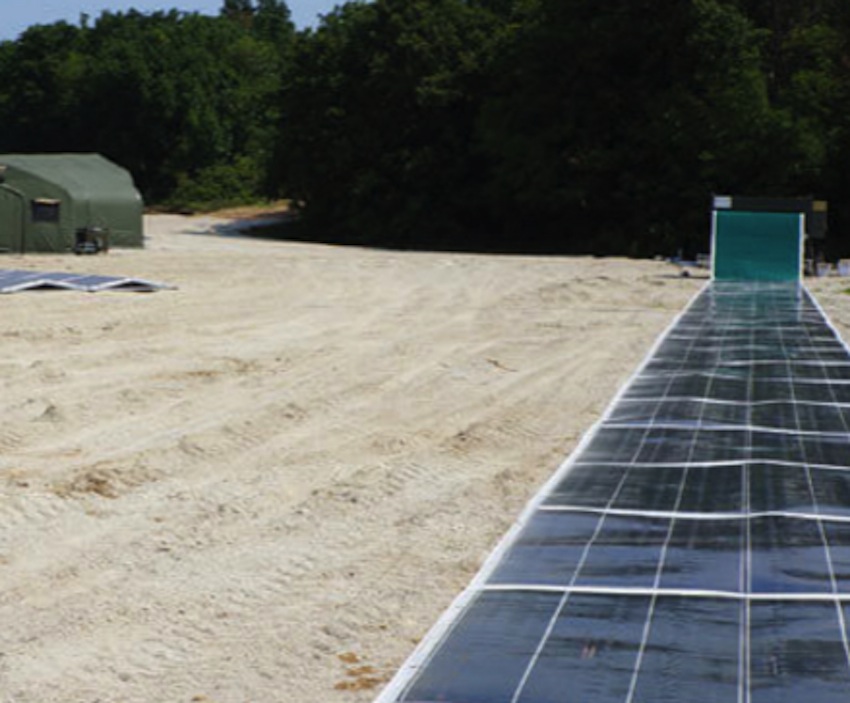CIGS: Rock Star of Photovoltaics?

IDTechEx's new report 'Electronics Reshaped 2020-2040' reveals a booming solar PV market in the $100 billion, 100GW territory. Silicon is in front due to massive Chinese investment, with single-crystal silicon likely to usurp polycrystalline silicon. Amorphous silicon, dye-sensitised solar cells, and CdTe have lower growth, perhaps due to concerns about the use of toxic metals such as cadmium in CdTE and lead in emerging perovskite technologies.
But CIGS PV sales are up 50-fold in ten years. Solar Frontier of Japan now has 1 percent of global PV output and CIGS overall has passed 2 percent by "redefining the battleground", according to IDTechEx, which describes CIGS as the "rock star of photovoltaics".
Flexibility in photovoltaics often means heavy and slightly bendable, but CIGS technologies are flexible enough to be rolled up. For example, the 300kW technology from Renovagen of the UK unrolls like a carpet (pictured above) to act as a complete microgrid. CIGS is the lowest cost of ownership on a building façade because no strengthening is needed, unlike so much competition, and it lasts. MIT has used CIGS for mobile desalinators in Puerto Rico citing the technology as: “Waterproof, thin, and extremely durable, good even at sunrise and sunset, high-power output even when part shaded, keeps working even if penetrated by tree branch”.
CIGS has three times the efficiency of flexible organic photovoltaics OPV. Indeed, lightweight polymer CIGS substrates (Flisom with EMPA of Switzerland and now further improvements by Korea Institute of Energy Research) are gaining favour. Semi-transparent CIGS has been demonstrated, and it's not usually necessary to use useIndium-tin-oxide transparent conductive electrodes, which are brittle. Although there is some cadmium in today’s versions, next generation CIGS will apparently be cadmium-free.
CIGS will not take over the world of renewable energy, but compared to wind it offers faster cost reduction and no moving parts. It is not winning the battle for solar vehicle bodywork: single crystal silicon has grabbed most of that, leaving CIGS some retrofit business, but CIGS may fight back with similar efficiency and lighter weight in due course, says IDTechEx.
CIGS seems to be powering the trend to go off-grid with microgrids as analysed in the IDTechEx report, 'Distributed Generation: Off-Grid Zero-Emission kW-MW 2020-2040'. IDTechEx reports expansion plans for multiple gigawatts of extra CIGS production. Chinese construction materials and engineering company CNBM, electricity equipment supplier Shanghai Electric and subsidiaries of mining and generation giant China Energy Investment Corporation (formerly Shenhua Group) have just made strategic investments in CIGS technology and production equipment.


































